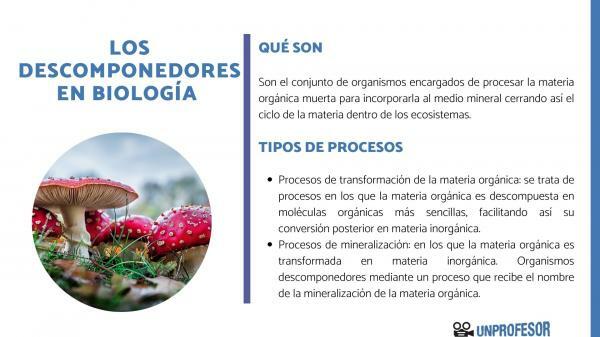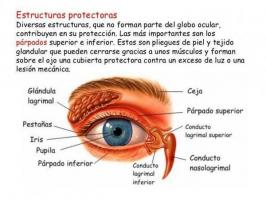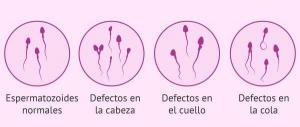Definition of DECOMPONERS in biology

In nature, dead organic matter does not accumulate in the ecosystem until it collapses, but it is recycled and disappears. What organisms are in charge of processing the remains of organic matter? In this lesson from a TEACHER we will see what the definition of decomposers in biology and what is its ecological importance.
The decomposers are the set of agencies in charge of process dead organic matter to incorporate it into the mineral environment, thus closing the cycle of matter within ecosystems.
The decomposition of organic matter usually involves two types of processes:
- Organic matter transformation processes: These are processes in which organic matter is decomposed into simpler organic molecules, thus facilitating its subsequent conversion into inorganic matter.
- Mineralization processes: in which organic matter is transformed into inorganic matter. Decomposing organisms through a process that receives the name of the mineralization of organic matter.
Microorganisms are the main decomposers
The microorganismsthey are the main decomposers in all ecosystems. It is estimated that 90% of carbon mineralization (conversion of carbon that is part of the organic matter in CO2) is the result of the metabolic activities of these two groups of organisms. The remaining 10% of the carbon in organic form is mineralized by other organisms.
The overwhelming contribution of microorganisms in the decomposition processes is reflected in a number of facts:
- Microorganisms they are ubiquitous, that is, they are present in all ecosystems and environments on the planet. There are even species of microorganisms capable of surviving in the most extreme environments, such as the craters of active volcanoes or the depths of the oceans; where most life forms are impossible. This omnipresence is explained by its easy dissemination through air and water.
- Its total biomass is very large. The biomass of prokaryotes is considered to be equivalent to the biomass of plants.
- They have one very high growth rate and metabolism, so they proliferate very quickly if the environment is appropriate. A population of bacteria can double in less than an hour under favorable conditions, thus exhibiting exponential growth.
- Considering them as a whole, microorganisms possess a metabolic diversity which allows them to degrade a wide variety of organic compounds.
The ecosystems they are complex biological organizations. They are made up of two fundamental elements:
- Biocenosis or Community of organisms It is the set of all the organisms that are part of the ecosystem. These organisms are related to each other through food webs.
- Biotope or physical environment: it is the inert environment that sustains the ecosystem. The soil, air, and bodies of water in the area where the community of organisms is located.
The populations of the different species of organisms that make up the community of organisms establish interactions with the objective of obtaining matter and energy, these interactions receive the name of trophic relationships.
The trophic relationships that are established between the different populations of organisms form food chains or webs (also called food chains). In these networks, predator-prey relationships are defined between the different populations. Generally these relationships take the form of a network because a predator usually has more than one prey as a food source and vice versa.
Within ecosystems circulates a flow of matter and energy. Matter and energy are incorporated from the physical environment (mineral) by the primary producers and flow through the different levels trophic (producers, primary consumers or herbivores, secondary consumers or carnivores and tertiary consumers or super predators).
The trophic level of the producers is constituted by autotrophic organisms that are capable of transforming inorganic matter into own matter using solar or chemical energy as an energy source. The main autotrophic organisms are photosynthetic organisms.
The main producers of organic matter Are the unicellular algae that are part of the phytoplankton of the oceans and continental waters, and the phanerogams in terrestrial ecosystems. The remaining trophic levels are made up of organisms heterotrophs that use the organic material accumulated by the producers as a direct or indirect source of matter and energy.
- In the case of Energy, It's about a open flowIn each step from one trophic level to another, a large amount of dissipated energy is lost in the form of heat.
- The case of the matter is different, since a closed cycle in which all the matter incorporated into the ecosystem ends up returning to the physical environment. Let us remember that the principle of conservation of matter establishes that it is neither created nor destroyed, it only transforms.
Therefore, the inorganic matter that has been incorporated into the ecosystem by the primary producers must return to the physical environment converted back into its inorganic form. The mineralization process It is essential to close the cycle of matter and provide producers with the inorganic matter necessary for the construction of their own organic matter.
For the most part, mineralization processes consist of decomposition processes of remains and excretion products of plants and animals by microorganisms, mainly fungi and bacteria.
In addition to decomposers, there are other organisms that feed on dead organic matter, they are called detritivores. Although some authors consider that detritivores are also decomposers, while in other cases they are considered as consumers.
Detritivores are animals that use dead organic matter as a food source and they include invertebrate animals such as starfish, crabs, insects or worms; and vertebrates such as mammals and scavengers.
Between both groups of organisms are established two clear differences:
1. Ability to carry out the mineralization process
Although in some cases detritivores are capable of transforming organic matter; detritivores are not capable of carrying out the mineralization process that transforms organic into inorganic matter. Therefore, strictly speaking, they cannot be considered decomposers.
2. Type of digestion
Another difference to consider between these two groups of organisms is that decomposers perform an external type digestion, that is, they discharge enzymes to the medium to digest the dead organic matter and subsequently absorb the compounds obtained in this process to use them as food. Instead, detritivores perform an internal digestion system to obtain nutrients.
Roger Y. Stanier, John L. Ingraham, Mark L. Wheelis, P. R. Painter. (1992) Microbiology. Barcelona: I reversed.



